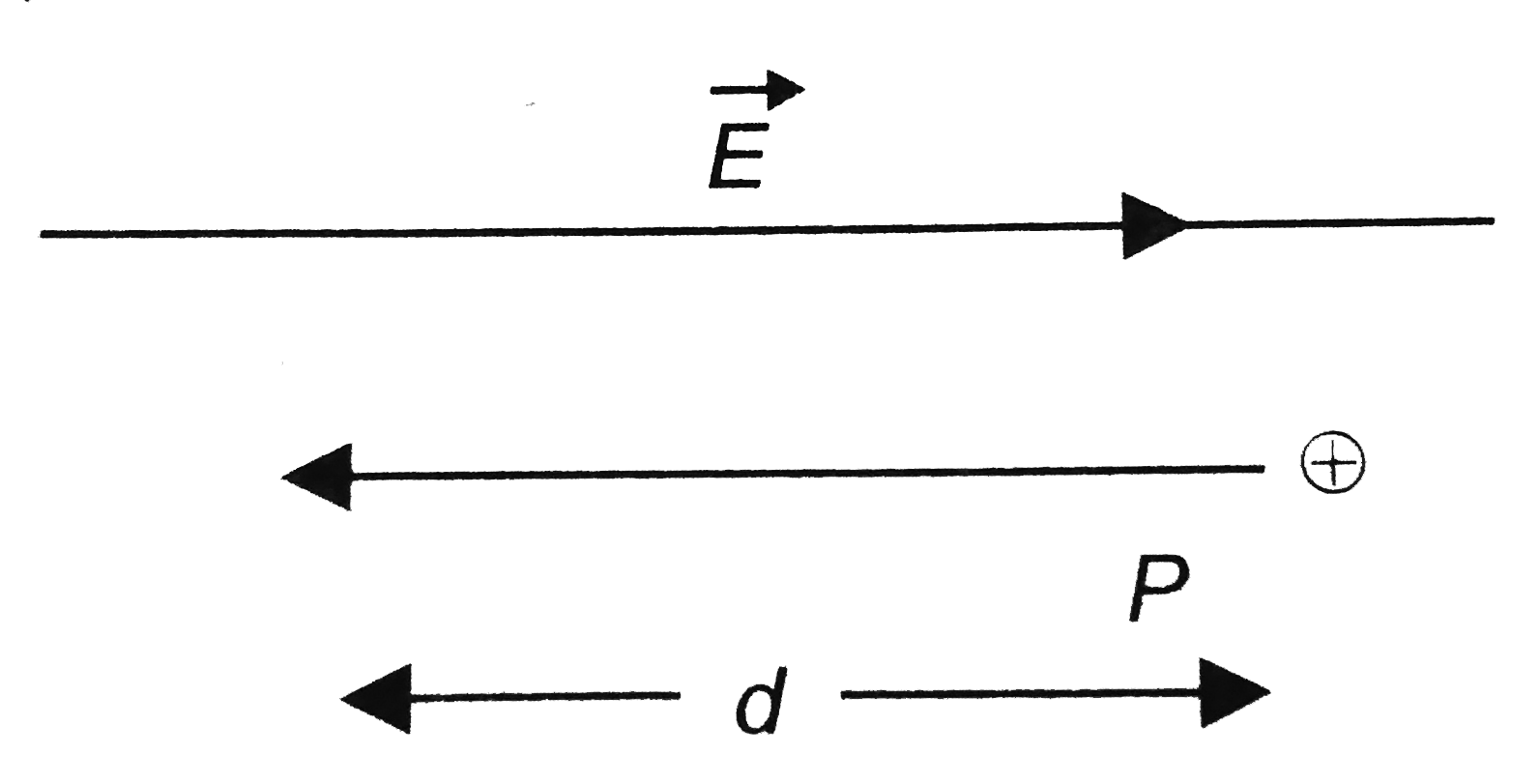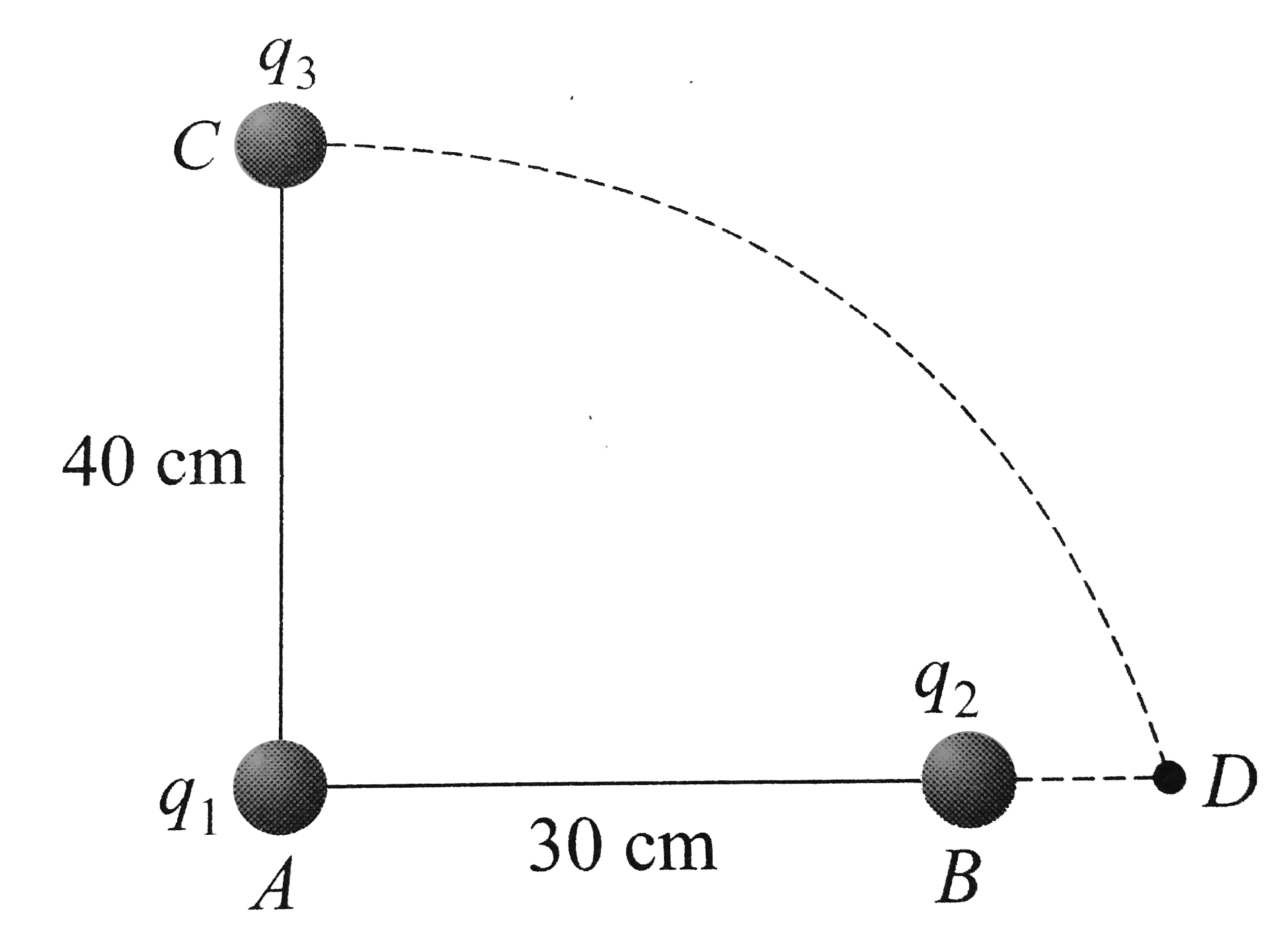Complete Solutions to Check point 2.3 of chapter ELECTROSTATIC POTENTIAL AND CAPACITORS of Class 12 book with complete answers and questions
| Class 12 | PHYSICS |
| Chapter | ELECTROSTATIC POTENTIAL AND CAPACITORS |
| DC PANDEY NEET | Check point 2.3 |
| Number Of Questions | 15 |
| Academic Year | 2023-24 |
When a positive `q` charge is taken from lower potential to a higher potential point, then its potential energy will
View SolutionWhen one electron is taken towards the other electron, then the electric potential energy of the system
View SolutionTwo positive point charges of `12 mu C` and `8 mu C` are `10 cm` apart. The work done in bringing then `4 cm` closer is
View SolutionIn the figure, a proton moves a distance `d` in a unform electric `vecE` as shown in the figure. Does the electric field do a positive or negative work on the proton? Does the electric potential energy of the proton increase or decrease?

View SolutionThe electrostatic potential energy between proton and electron separated by a distance 1 Å is
View SolutionIdentify the wrong statement
View SolutionTwo positive point charges of 12 and 5 microcoulombs, are placed 10 cm apart in air. The work needed to bring them 4 cm closer is
View SolutionThree identical charges each of `2 muC` are placed at the vertices of a triangle ABC
If `AB+AC=12 cm and AB.AC = 32 cm^(2)`, the potential energy of the charge at A is 1.53 J 5.31 J 3.15 J 1.35 J

View SolutionIf `3` charges are placed at the vertices of equilateral triangle of charge 'q' each. What is the net potential energy, if the side of equilateral `Delta` is `l cm` ?
View SolutionThree charges `Q, (+q)` and `(+q)` are placed at the vertices of an equilateral triangle of side `l` as shown in the figure. It the net electrostatic energy of the system is zero, then `Q` is equal to

View SolutionIf identical charges `(-q)` are placed at each corner of a cube of side `b`, then electric potential energy of charge `(+q)` which is placed at centre of the cube will be
View SolutionTwo charges `q_(1)` and `q_(2)` are placed `30 cm` apart, as shown in the figure. A third charge `q_(3)` is moved along the arc of a circle of radius `40 cm` from `C` to `D`. The change in the potential energy o fthe system is `(q_(3))/(4pi epsilon_(0))k`., where `k` is

View SolutionFor a dipole `q= 2xx10^(-6)C` and `d= 0.01m`. Calculate the maximum torque for this dipole if `E= 5xx10^(5)N//C`
View SolutionA molecule with a dipole moment `p` is placed in an electric field of strength `E`. Initially the dipole is aligned parallel to the field. If the dipole is to be rotated to be anti-parallel to the field, the work required to be done by an external agency is
View SolutionThree points charges of `1 C, 2C and 3C` are placed at the corners of an equilateral triangle of side 100 cm. Find the work done to move these charges to the corners of a similar equilateral triangle of side 50 cm.
View Solution
Check point 2.3 questions and complete solutions for chapter ELECTROSTATIC POTENTIAL AND CAPACITORS of DC PANDEY ENGLISH of Class 12